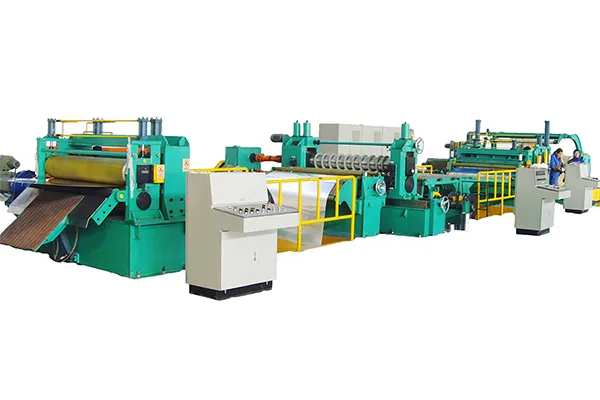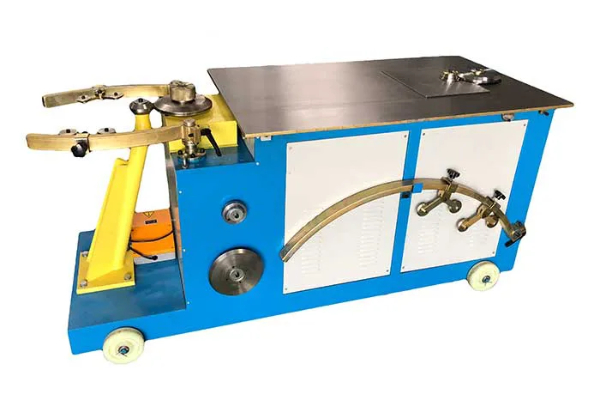
Tips for Operating and Maintaining Your Metal Bending Machine
- By:Metmac
- 2024-08-26
- 148
Maintaining and operating your metal bending machine efficiently is crucial for ensuring optimal performance, extending its lifespan, and preventing costly downtime. Here are some practical tips to help you maximize the productivity and longevity of your machine:
Proper Machine Setup
1. Ensure a Level and Stable Foundation: Place your machine on a level and stable surface to minimize vibrations and ensure accurate bending.
2. Calibrate Regularly: Calibrate the machine regularly to maintain precision and avoid bending errors. This involves adjusting the bending angle, ram speed, and die clearance.
3. Lubricate Regularly: Follow the manufacturer’s recommended lubrication schedule to minimize friction and extend the lifespan of moving parts.
Material Preparation
1. Choose the Right Material: Select the appropriate material for your bending requirements, considering its thickness, strength, and ductility.
2. Prepare the Material: Ensure that the material is clean and free of any burrs or imperfections that could affect the bending process.
Bending Operation
1. Set the Correct Bending Parameters: Determine and set the appropriate bending angle, ram speed, and die clearance based on the material properties and desired bend radius.
2. Position the Material Carefully: Place the material accurately between the dies to achieve the desired bend location and angle.
3. Monitor the Bending Process: Pay attention to the bending process and observe any irregularities or unusual noises that may indicate an issue.
Maintenance Schedule
1. Daily Maintenance: Perform daily checks on fluid levels, lubrication, and any visible signs of wear or damage.
2. Weekly Maintenance: Clean the machine, inspect the dies for any damage or wear, and tighten any loose bolts or nuts.
3. Monthly Maintenance: Conduct a more thorough inspection, including checking the hydraulic system, electrical connections, and any other potential problem areas.
4. Annual Maintenance: Schedule an annual maintenance service with a qualified technician to ensure optimal performance and prevent major breakdowns.
Troubleshooting Common Issues
1. Bending Errors: Calibrate the machine, check for damaged dies, and ensure the correct material and bending parameters are being used.
2. Hydraulic Leaks: Inspect hydraulic lines, hoses, and seals for any leaks or damage. Tighten connections and replace damaged components as needed.
3. Electrical Issues: Check for loose or damaged electrical connections, inspect fuses and circuit breakers, and contact a qualified electrician if necessary.
-
Iron Sheet Laser Cutting Machine: Unmatched Precision for Demanding Fabrication with METMAC
2026/01/06 -
Precision Metal Cutting Machine: The Engine of Modern Manufacturing, Powered by METMAC
2026/01/06 -
Sheet Metal CNC Laser Cutting Machine: Precision Redefined with METMAC Technology
2026/01/06 -
Sheet Metal Press Brake for Sale: Find Your Precision Bending Solution with METMAC
2026/01/06
-
Advanced Sheet Metal Rolling, Laser Cutting, and Folding Machines for Precision Fabrication
2025/10/31 -
High-Performance Sheet Metal Bending and Cutting Machines for Modern Fabrication
2025/10/31 -
High-Quality Sheet Metal Equipment for Sale: Efficient Solutions for Modern Manufacturing
2025/10/31 -
High-Performance Sheet Metal Equipment for Sale: Forming and Shearing Solutions for Modern Fabrication
2025/10/22
-
A Guide to the Latest Innovations in Sheet Metal Folding Machines
2024/11/29 -
Key Features to Consider When Investing in a Sheet Metal Folding Machine
2024/11/28 -
Enhancing Precision with Advanced Sheet Metal Folding Machines
2024/11/27 -
How to Choose the Right Sheet Metal Folding Machine for Your Workshop
2024/11/26







